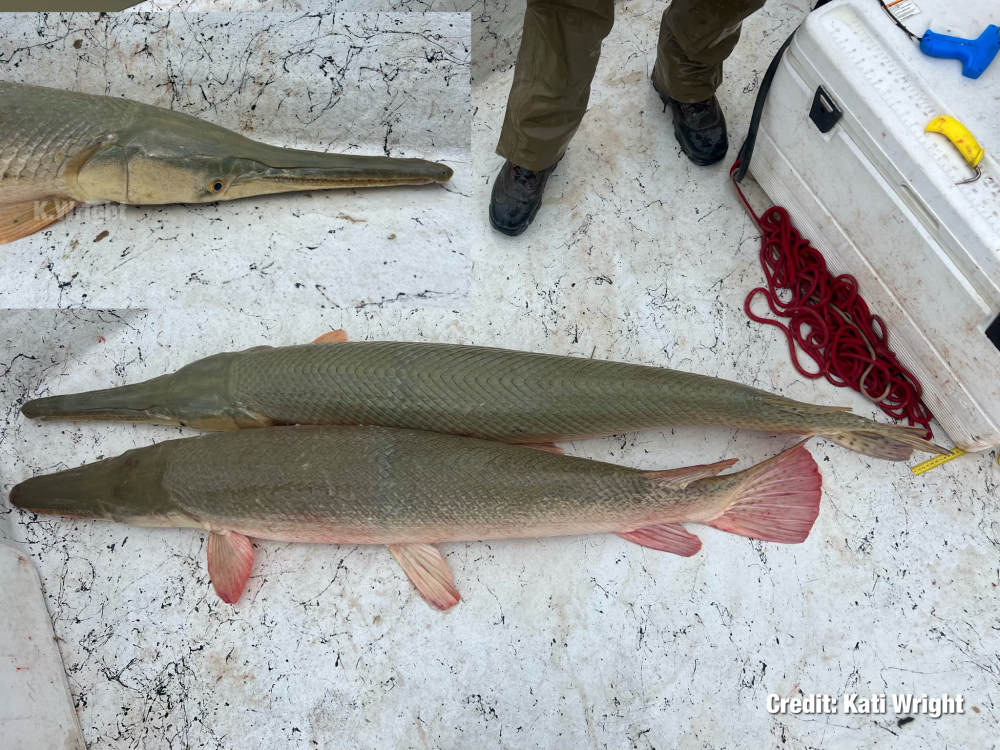Fans of ancient animals may have heard the term “living fossil” used to describe creatures that have taken a relaxed approach to evolution, remaining seemingly unchanged for millions of years. Now, new research into gars is the first to uncover a mechanism that can explain why some animals get left behind. In some living fossils, evolution really does occur at a drastically slower rate, and it means they can create viable hybrids with other species – even when they haven’t shared a common ancestor since dinosaurs walked the Earth.
The study dove into the curious world of gars, a group of fish so famously old that even Charles Darwin mentions these living fossils in the Origin Of Species. What they lack in speciation they make up for in curious hybrids, having the oldest known parental split between two separated groups that can still reproduce to create fertile offspring.
What is a living fossil?
A living fossil is considered to be an animal alive today whose characteristics, or phenotype, reflect those of a species known only from the fossil record. It was a term coined by Charles Darwin in 1859, but one that’s been used in varied and unclear contexts ever since. Now, a new paper has come to the rescue to demystify some of the conversation around living fossils, including why they occur in nature.
What are gars?
The toothy ancestors of gars were grinning through the waters of the Jurassic period around 150 million years ago when dinosaurs were enjoying their pre-Chicxulub era. They’re considered primitive fishes, belonging to the family Lepisosteidae which contains the only surviving members of the Ginglymodi – a group of ray-finned fish including gars and their extinct relatives.
Living fossils? Yes they gar.
Gars’ old-school status landed them as the subject of research into why living fossils exist in nature, revealing that these ancient ray-finned fishes have remained largely unchanged for tens of millions of years. Not only do they fit the definition of living fossil, but they have the slowest rate of molecular evolution seen among all jawed vertebrates.
This would be equivalent to a chimpanzee producing fertile offspring with a kangaroo, a whale with a wombat, or an ostrich with a blackbird! Absolutely nutty!
Chase Brownstein
There are seven species alive today, all of which – structurally speaking – look near-identical to their fossilized families. Around 100 million years ago, one of the two major lineages of gars diverged from their ancient ancestors, a fact that becomes all the more curious when you find out who they’re reproducing with.
“[Thomas Near] had read reports that gars could hybridize across generic (genus-level) splits,” said study lead Chase Brownstein at Yale University to IFLScience. “We ended up showing that the split between the two living genera of gars happened about ~106 million years ago.”
“That’s nearly 40 million years before Tyrannosaurus rex appeared on the scene! Yet, we show that these two gar genera are still producing viable and fertile hybrids in the wild. This would be equivalent to a chimpanzee producing fertile offspring with a kangaroo, a whale with a wombat, or an ostrich with a blackbird! Absolutely nutty!”
Hybrids discovered between the Alligator Gar and Longnose Gar represent the offspring of genetically isolated groups whose last common ancestor existed 100 million years ago, making it the oldest identified parental split across animals, plants, and fungi. These hybrids are rare, but not unheard of – and by a stroke of sweet serendipity, one of co-author Solomon David’s graduate students, Kati Wright, actually caught one the same week as the study’s publication.

Behold, the Alligator x Longnose Gar
Image credit: Kati Wright
A genetic explanation as to why gars can reproduce so far out of their apparent dating pool followed the analysis of a dataset of 1,105 exons — the coding region of DNA — from a sample of over 400 jawed vertebrates. It showed that gars evolve up to three orders of magnitude slower than any other major group of vertebrates, meaning they can have a much older common ancestor and still produce viable offspring compared to species whose rate of genetic mutation is higher.
“Our paper shows that living fossils aren’t simply strange accidents of history but provide a fundamental demonstration of the evolutionary process in nature,” Brownstein said in a statement. “It shows that analyzing patterns in living fossils’ evolutionary history might have implications for our own story. It not only helps us better understand the planet’s biodiversity, but potentially could one day be applied to medical research and improve human health.”
Gars’ slow rate of genetic mutation may have held them back from achieving species richness, but they’ve done a lot with their marathon run on our planet.
“Gars have been around for over 150 million years, while they have slow overall rates of evolution, they have adapted well to their environments over time,” Solomon David, of GarLab glory, told IFLScience. “They breathe air, they have toxic eggs, and armored scales. They can even live in saltwater for extended periods.”
“Our previous research has shown they can (relatively) rapidly adapt to different climates at different latitudes (Spotted Gars adapting to the Great Lakes region in 8,000 years). They are the ultimate survivors, but that doesn’t mean we shouldn’t be taking measures to conserve these and other ecosystems in the face of climate change.”
The next question on the team’s tongues is whether super-efficient DNA repair that enables them to correct mutations has helped gars for the last 100+ million years. Finding out will likely entail transgenic experiments using model vertebrate systems, such as zebrafish, and toxicological experiments to measure the efficacy of gar DNA repair, so watch this space!
The study is published in the journal Evolution.
Source Link: What Is A Living Fossil? First Evidence Of A Biological Mechanism Reveals All